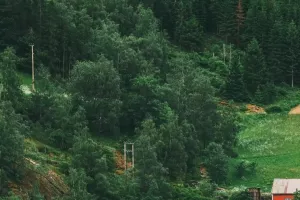The Grand Canyon
For more than a century, tourists from all over the world have visited the Grand Canyon to experience its awe-inspiring vistas. First protected in 1893 as a reserve and later as a national monument, it wasn’t until February 26, 1919, that the Grand Canyon became a national park. As we celebrate nearly 100 years of protecting this special place, check out 6 great facts about this Arizona icon.
1. WE DON'T REALLY KNOW HOW OLD IT IS
It has long been believed that the Colorado River began carving the Grand Canyon about 6 million years ago, but a 2012 study contained a real shocker, suggesting that the process may have begun as far back as 70 million years. In all likelihood, the Grand Canyon as we know it today started out as a series of smaller canyons 70 million years ago, but the majority of the canyon did not begin to take shape until much more recently.
2. THE GRAND CANYON CREATES ITS OWN WEATHER
Of all Grand Canyon facts, this one is pretty cool – no pun intended. Sudden changes in elevation have an enormous impact on temperature and precipitation, so the weather you're experiencing could vary drastically depending on where you are in the Grand Canyon. The coldest, wettest weather station in the region is the Bright Angel Ranger Station on the North Rim, while the hottest (and one of the driest) is just 8 miles away at Phantom Ranch.
3. THERE ARE LOTS OF OTHER FOSSILS IN THE AREA
While the dinosaurs might have missed out on seeing the Grand Canyon, lots of other fossils have been found that suggest other creatures frequented the location. They range from ancient marine fossils dating back 1.2 billion years to fairly recent land mammals that left their remains in canyon caves about 10,000 years ago.
4. FISH ARE RELATIVELY UNCOMMON IN THE GRAND CANYON
Prior to modern flood control measures, the Colorado River provided a uniquely difficult habitat for fish, with heavy silt, frequent floods, and temperatures ranging from extreme heat in summer to sub-freezing in winter. As a result, only eight fish species are native to the Grand Canyon, six of which are found nowhere outside of the Colorado River.
5. THERE'S A TOWN IN THE GRAND CANYON
Lists of Grand Canyon facts don’t often include information about its human population, but surprisingly, it does have one. Supai Village is located at the base of the Grand Canyon within the Havasupai Indian Reservation. Inaccessible by road and with a population of just 208, it is the most remote community in the lower 48 states, and is the only place where mail is still delivered by pack mule.
6. THE GRAND CANYON IS BIGGER THAN THE STATE OF RHODE ISLAND
The Grand Canyon is a mile deep, 277 miles long and 18 miles wide. While the park doesn’t include the entire canyon, it does measure in at a whopping 1,904 square miles in total. In comparison, Rhode Island is around 1,212 square miles.


